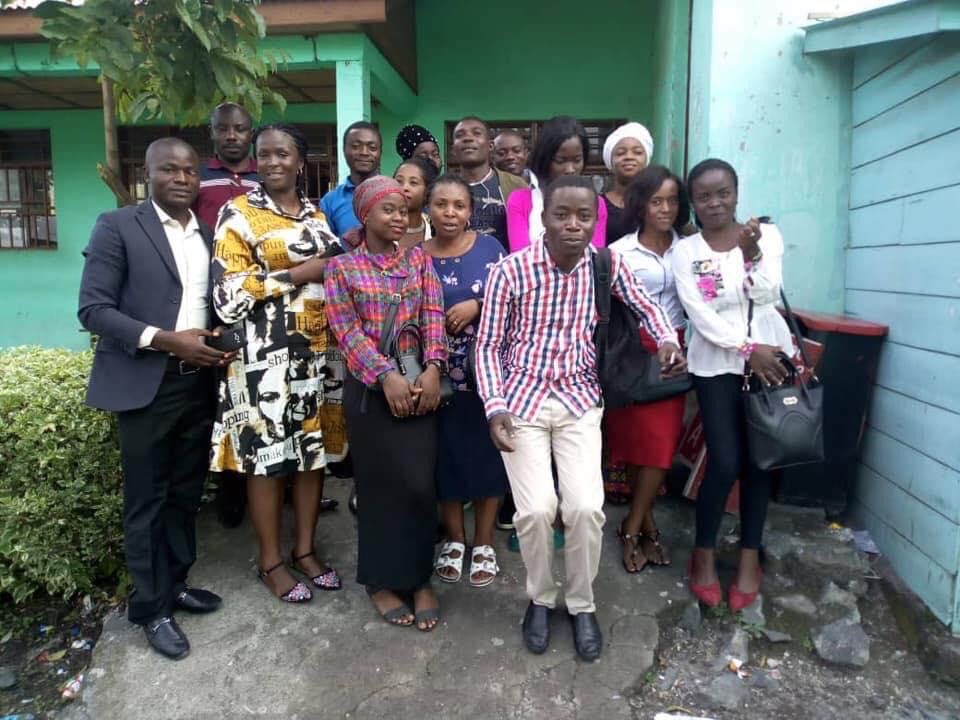
SELF-HELP AND RESILIENCE IN THE DEMOCRATIC REPUBLIC OF CONGO
I interviewed Bertin Kalimbiro from the Democratic Republic of Congo about his work in the Goma region to grow food safely and help people threatened
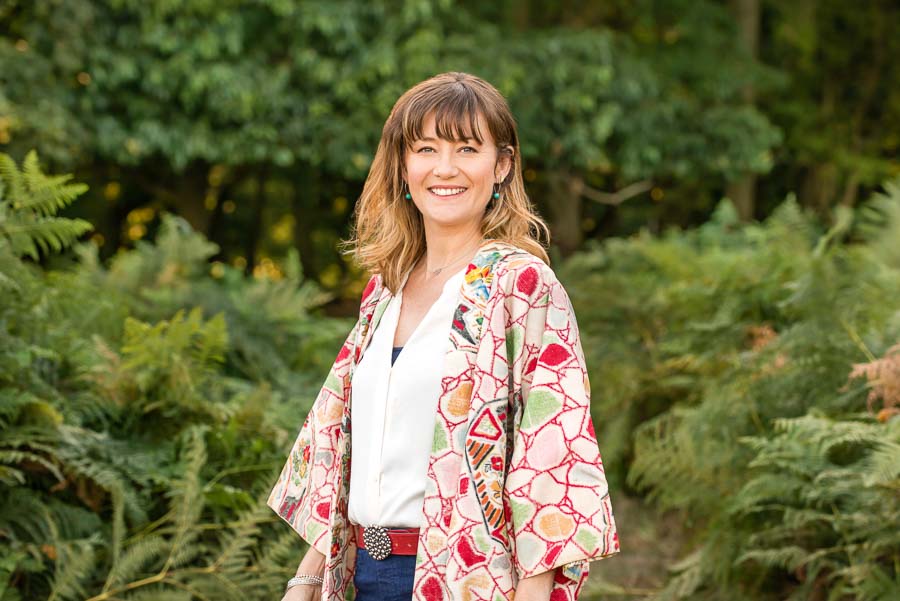
I interviewed Art Therapist and Counsellor Charlotte Jane Kessler about her therapeutic work in health/drug centres and her art therapy, grief work and women’s circles. Charlotte introduced me to concepts such as her ‘power pallet’ and ‘gift exchange’ as well as offering some inspiring stories about people she has helped.
Leslie: Looking back, what stands out from your 10 years working with non-statuary mental health and drug services? What did you learn from this period?
Charlotte: When I worked as an Art Therapist I was interested in Buddhist meditation for a time and inspired by a female co worker who used Buddhist approaches in her counselling and would meditate every lunchtime. She inspired me in her approach to life and counselling. I’ve since learned that meditation and focusing the breath with awareness and presence in the moment has a lasting impact on the brain and body. Even fifteen to twenty minutes a day restructures areas of the brain reducing the fight-and-flight syndrome and increasing the frontal cortex operations to do with more rational, calm thinking . It is hugely beneficial to reduce stress.
Working for MIND (mental health non statutory services) I facilitated group Art Therapy sessions in the day centre where service users came for the supportive drop-in environment.
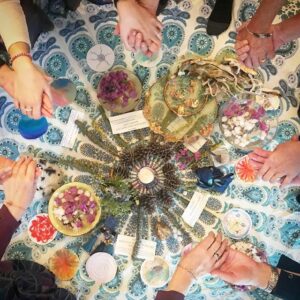
A service user who suffered with severe depression came to my Art Therapy women-only group and within a matter of months was volunteering in the kitchen of the day centre. During a creative exercise it became apparent that she liked to ‘look after and feed people’ and had always dreamed of having a café. This passion was expressed in her images and mediated through the art-making which then allowed her to talk about it within the group. She was able to put her thoughts and feelings from the paper into words and express her hopes and dreams. This connected her to an integral part of her personality that had been lost in her depressed state. She transferred this moment of realisation and develop a role for herself helping in the kitchen of the day centre. She even began an NVQ in food and hygiene to further develop her skill and confidence. The confidence she gained in the art therapy sessions supported her to find a voice again and enabled her to take direct action.
Leslie: How do you go about working as an art therapist today?
Charlotte: I offer private creative therapy, deep-dive creative morning sessions, as well as one-to-one holistic life coaching from my studio or consulting room. I offer workshops too, using art therapy tools and creative exercises to support exploration.
For the past four years I have facilitated workshops at the Bishop Grossetest University in Lincoln. The annual event titled ‘Creative and Academic Responses to Death and Dying’ offers many forms of creative engagement and food for thought.
I often structure my workshops to give grief a sacred ‘rites of passage‘ space, inspired by the work of Martin Prechtel and Francis Weller.
I teach the principles of art therapy, how artists in society have used various art-making forms to process personal and collective grief and then go on to facilitate experiential art therapy. The creation of a mandala, with various objects from nature, stones, broken pottery and leaves etc holds a similar dynamic to laying down a wreath and there is a very special atmosphere as a group of strangers tend to the placing of objects in patterns to represent their grief and gratitude.
Grief is not something to be fixed or ‘got through’ however. My workshops aim to be grounding and healing in the many faces of grief as it allows a person to stay present with what is rather than attempt to cover it up or run away.

In the women’s groups I have been holding for the past couple of years I sometimes invite therapeutic art that has a sacred element to it. We have made prayer sticks, with ribbon and feathers holding a personally written prayer or wish. And explored shadow and light parts of the personality, as well as aspects to be burned away ready for the new growth of the soul by the making of Marzanna dolls, (a traditional Polish Pagan ritual) which focuses on cleansing-off the winter season to encourage the revival of spring.
Leslie: What are the various aspects of your ‘power pallet’, please?
Charlotte: I have various techniques learned over the years from art psychotherapy theory, mindfulness practices, gestalt therapy, body mind practices, visualisation skills and meditation. I coined the phrase ‘power pallet’ because one day I imagined the various skills and techniques I was using being like the colours on a pallet that I mix together. Painting requires me to blend and apply the base colours to create the right tones, shades and atmosphere in the painting. Like when I’m with a client, I attune to them, which then indicates which tools and interventions would best serve their enquiry, healing and growth in each session.
Leslie: How does your concept of ‘gift exchange’ with nature work in practice?
Charlotte: This weave is a constant experiment as there are many forms of gift exchange. I use paper for my prints and mounts, so as a way of living in mindful reciprocity with the earth and her materials. I donate to two charities each month. This is an active gift exchange, albeit with money. Gift Exchange mostly is about energy exchange and intention of sharing and passing something on.
“We have to make it as natural to give back to nature as it is to take nature for granted, to shift from a consumer species to a restorer species”. Claire Dubois – founder of Treesisters.org
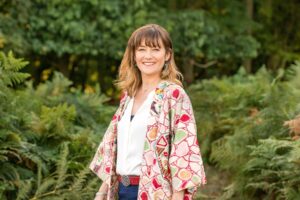
Treesisters are reforesting areas of the tropics in Nepal, Madagascar, Mount Kenya, Brazil, Cameroon, working with farmers and women in local communities in. I donate a percentage of my art sales to them as a way of living in gratitude for the materials my art business relies on as well as the air that I breath! The Woodland Trust are my second charity of choice in the UK because I love tress and our native bees rely heavily on the amino acids and protein from tree pollen, more than garden flowers.
Gift exchange was a way of clients paying back energetically for their sessions whilst I was training. I have the most wonderful collection of ‘Azul’ bright blue and yellow parrot feathers gifted to me as an exchange, and another arrangement has gifted back to me one client’s proof-reading skills for when I come to write my online women’s course.
Gift Exchange invites a dynamic relationship with the work and people involved. It bridges relationships, action and intention through trust and authenticity. It’s a wonderful way of experimenting with value, energy and skills set too. There is a brilliant book about it called ‘The Gift’ by Lewis Hyde. I have dipped in and out of it for the past 6 years for inspiration!
Gift exchange opens us up to possibilities that we may otherwise miss.
Within the creative process there is also an aspect of gift exchange. When I’m creating art works now I set the studio space with Sacred Intention. The artworks I create are an act of gratitude and grace, weaving and channelling prayer like energy into each piece of art.
Leslie: Why did you relocate to Lincolnshire?
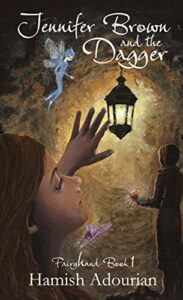 Charlotte: I was living in London and doing regular events earning money and also doing various projects such as book cover design (Jennifer Brown and The Dagger) and also gardening.. My days were long and I often worked weekends. It was putting a lot of pressure on my creative flow and wellbeing. I found myself wanting to return to my roots from a deeper place inside me too. Like a homing pigeon, I guess! I was being drawn back to be near my close family and live closer to nature.
Charlotte: I was living in London and doing regular events earning money and also doing various projects such as book cover design (Jennifer Brown and The Dagger) and also gardening.. My days were long and I often worked weekends. It was putting a lot of pressure on my creative flow and wellbeing. I found myself wanting to return to my roots from a deeper place inside me too. Like a homing pigeon, I guess! I was being drawn back to be near my close family and live closer to nature.
Leslie: Could you describe, please, your creative responses to grief and how they have helped you personally.
Charlotte: Anyone can use art making, or ‘mark making’ during times of stress, change and grief. The art becomes a container of thoughts and feelings and the process of making means you actively become your own companion. During my grieving time after my father died, a sketch book became a very tangible way to express and process my grief. It was a simple self-care tool that supported my transition through loss and the change I witnessed in my identity too.
It’s not that it removed feelings, but they had a safe home and at the same time more space was created within, after putting them ‘out there’ in the picture. I noticed how efficient this was in regulating waves of emotion and calming my nerves.
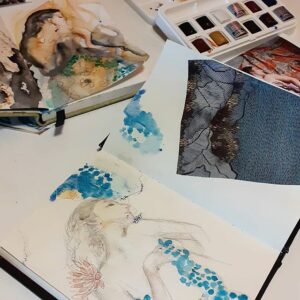
The practice of using a sketchbook was a very real anchor for me on the unknown or uncharted sea of grief. I still treasure my sketch books. They were like breadcrumbs through the forest showing me where I had come from and gave me a path to stay on when all seemed confusing and barren. There were times that doodling simply offered me ‘something to do’ when I couldn’t muster the focus or reason to do ‘anything else’.
They allowed me to be in the twilight zone of grief and still be present in some way to what I was going through. Even though I did not have words. There wasn’t anything to be said even, not always, just experienced.
The creative process let me be with myself and whatever came up be it numbness, feeling lost, sad, longing, empty, or feeling at odds in myself. I didn’t feel so alone. I knew that I became a very good friend to myself during this time.
Leslie: How has art and creativity changed your life and/or the lives of others?
Charlotte: Art has helped me since I was a child, sketching out things I didn’t understand and yet needed to express.
Knowing the inherent healing value of creativity from such a young age led me to a career using it for therapeutic healing and also for creating beautiful, meditative art works for sale.
I know my art and the making of it has supported many people, to find hope, peace and a way forward. Whether they came for art therapy and found new skills and built new positive self-beliefs or bought my work as visual reminders to connect to heart, nature and to find personal healing.
Customers have commissioned me paint works of art that honour and bridge, heal and commemorate. My work has carried the message inherent to the gift and power of Thresholds, for those willing to be aware, at poignant times of their life.
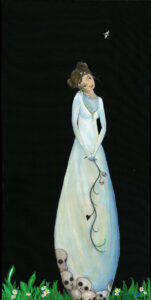
I have done 3 commissions in the last two years for people wanting to honour their loss, celebrate a life and deeply reconnect a bond of love. People seem to know how powerful a message can be felt through the soul of an image and the depth of healing within it.
It is a different part of the brain that gets engaged, which invites, opens, and reflects with art.
Leslie: Looking back, which people, places and events stand out from your past?
Charlotte: Helping a young female client work through emotional attachment issues and limiting core beliefs and develop the right mind set to reduce and stop a debilitating crack cocaine addiction. She was able to get back in touch with her true academic potential. After attending art therapy for 2 and half years she accessed more help to develop her employment skills and got a job working for the river and canal maintenance services.
I recall fondly, being able to help a young mother who wanted to come to art therapy but couldn’t due to the lack of facilities for child care. After speaking with my line manager, I was able to offer her and her daughter art therapy sessions. I set out the room so that the child was able to play and create with materials as a diversional therapy on one half of the room and the mother was able to use art in her assessment stage. With minimal talking she was able to work on her Life Timeline and explore some behavioural traits that were not serving her well. She was able to feel held and seen and the daughter had a wonderful time with the glitter and glue! Sometimes the mother and child made art together and it was most insightful as to the dynamic of boundaries in their relationship. As a result my client was able to begin exploring her own needs and ability to create and make boundaries, through the act of creating art together.
Next week I interview Kuli Kohli, poet, mother and full-time council worker with cerebal palsy who runs a Writers’ Group for Bengali Women.
ABOUT LESLIE TATE’S BOOKS:

I interviewed Bertin Kalimbiro from the Democratic Republic of Congo about his work in the Goma region to grow food safely and help people threatened

I interviewed computer expert and sustainability campaigner Dr Erlijn van Genuchten, who writes easy-to-understand books based on science full of practical suggestions for planet-friendly living.
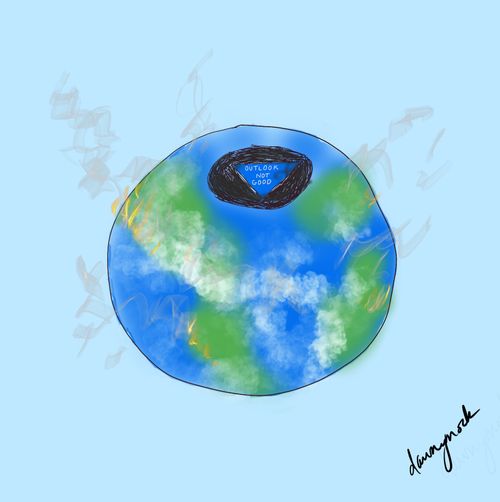
I interviewed Canadian cartoonist Dawn Mockler about how she works on cartoons that might be environmental or wordless but always witty – especially her famous
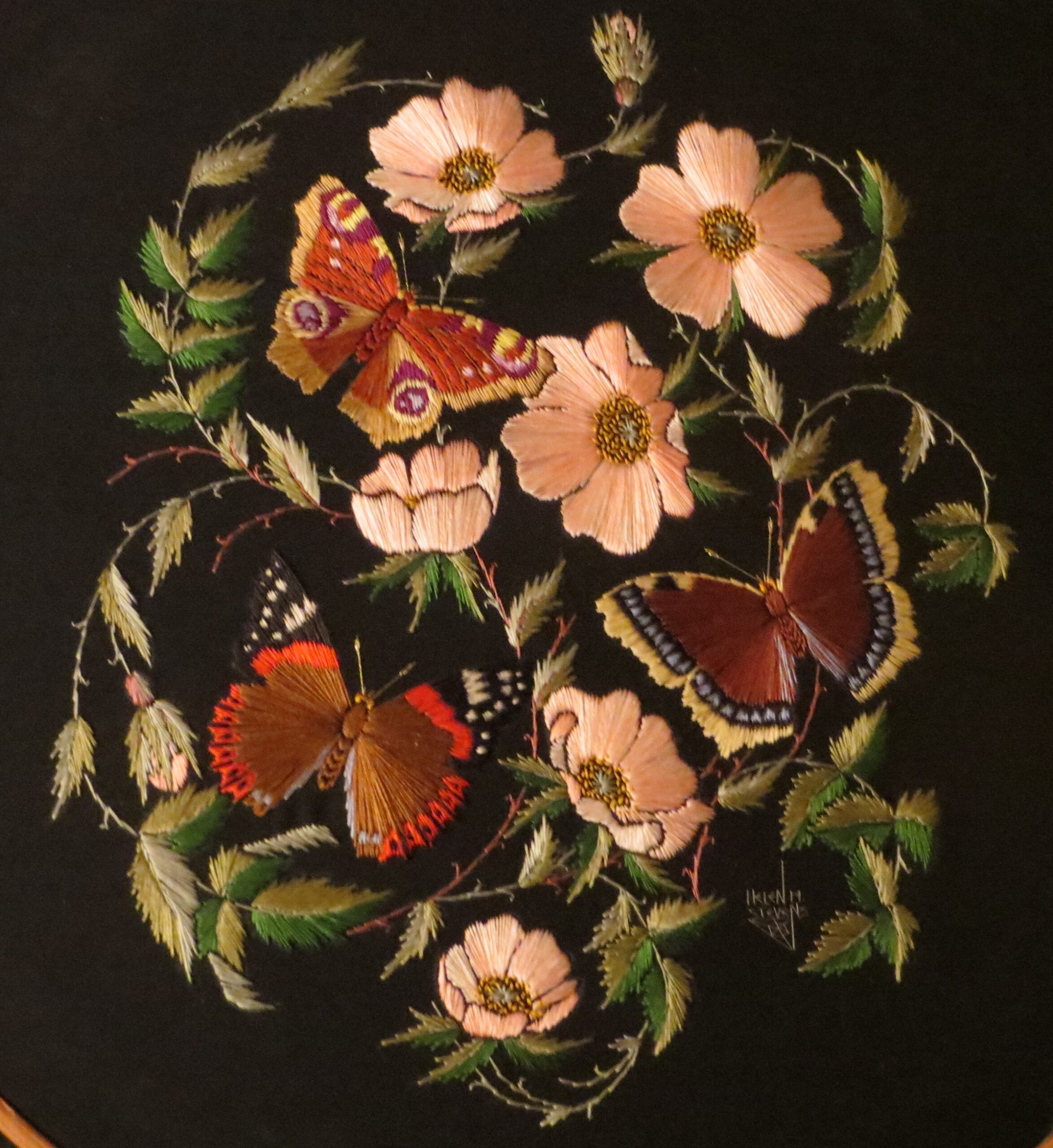
I inteviewed Helen M Stevens about how she has revived the art of embroidery, creating original contemporary patterns while studying and drawing on, “One of

I interviewed Councillor Rachel Smith-Lyte about the origins of her passion for nature and her environmental activism. Rachel tells the story of her teaching (and
| Cookie | Duration | Description |
|---|---|---|
| cookielawinfo-checkbox-analytics | 11 months | This cookie is set by GDPR Cookie Consent plugin. The cookie is used to store the user consent for the cookies in the category "Analytics". |
| cookielawinfo-checkbox-functional | 11 months | The cookie is set by GDPR cookie consent to record the user consent for the cookies in the category "Functional". |
| cookielawinfo-checkbox-necessary | 11 months | This cookie is set by GDPR Cookie Consent plugin. The cookies is used to store the user consent for the cookies in the category "Necessary". |
| cookielawinfo-checkbox-others | 11 months | This cookie is set by GDPR Cookie Consent plugin. The cookie is used to store the user consent for the cookies in the category "Other. |
| cookielawinfo-checkbox-performance | 11 months | This cookie is set by GDPR Cookie Consent plugin. The cookie is used to store the user consent for the cookies in the category "Performance". |
| viewed_cookie_policy | 11 months | The cookie is set by the GDPR Cookie Consent plugin and is used to store whether or not user has consented to the use of cookies. It does not store any personal data. |
4 responses
A fascinating guess. It’s great to see how she combines techniques and tools she has learned over the years and adapts them to the needs of the people she works with. Thanks, Leslie and good luck to Charlotte with all her future projects.
🙂 🙂 🙂
A very interesting interview . Fascinating insights into how art and active engagement with it influences and change us. How much we need it – perhaps similarly to nature.
Thank you, Anna. That’s the sort of comment I love – it really made me think!